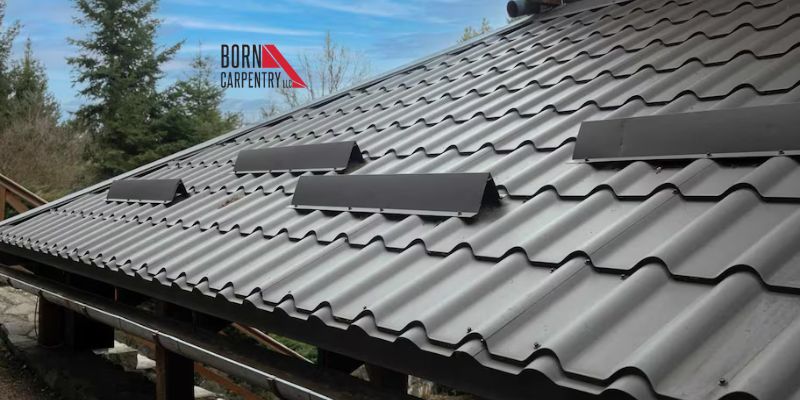It is important to prepare your home’s siding for the harsh winter conditions as winter approaches. Regular upkeep helps prolong the lifespan of your property and maintains its curb appeal. This winter care guide will offer you some of the most important things you should know to help you maintain and safeguard your siding in the coming months.
How To Maintain and Protect Your Siding During the Cold Months
It is crucial to consider winterizing and protecting your siding as the cold weather sets in. Harsh elements become a threat to the exterior of your home, resulting in possibly significant and costly issues. To prevent issues, here is how to maintain and protect your siding during the colder months:
1. Seal any cracks and gaps
It is imperative to confirm that your siding has no cracks or gaps while making preparations for winter. These gaps may result in water penetration into the house, which may in turn lead to the growth of molds within the home.
Carefully check your siding for openings or holes and seal them with the best caulk or sealant. Such a precaution saves you the trouble of having to arrange a moving company should there be mold and water damage. Make sure not to downplay the value of such a basic step aimed at protecting your house against the harsh winter conditions.
2. Trim nearby trees and branches
Ensuring your home is winter-ready involves a crucial step: trimming nearby trees and branches. During winter storms, a branch overhanging the siding or roof can also cause huge damage. It is important to cut back on the branches in advance of winter to minimize such risks.
It is advisable to hire a professional tree service if you do not have previous experience in tree trimming to ensure the safety and effectiveness of the task. This is an effective measure that reduces the chances of breaks on the branches, thereby saving on expenses and unexpected repairs. Ensure a winter season free of issues by prioritizing tree trimming.
3. Install snow guards

Snow guards are very important because they prevent the sudden release of accumulated snow from the roof and minimize the chances of damage to your siding and property. The same role is played in the prevention of ice dams that can cause water penetration and subsequent damage.
Nevertheless, it is important to carry out roof hail damage inspection, particularly after severe storms. Hail is very destructive, and it is important to check your roof, guards, and siding regularly.
Periodic evaluations enable early detection and restoration of possible problems to keep your home secure all winter long. Snow guards form a component of winter maintenance but never ignore the importance of post-storm inspection.
4. Consider siding upgrades
Improving the siding of your property will result in better insulation, increased energy efficiency, and raised curb appeal. Try different materials such as vinyl, fiber cement, or insulated siding, all of which provide unique advantages. Other choices also include energy-efficient options developed to withstand cold weather necessary for a cozy house.
New siding does not just improve appearance but also makes a better shield against winter’s cold, wind, and moisture. Another thing is that contemporary materials require minimal maintenance, thus saving you some time and effort. Make siding upgrades a smart investment to reinforce your home against winter.
5. Redirect downspouts and gutters
It is essential to maintain your gutter’s functionality as it helps divert the rainwater and melted snow away from your sidings and foundation. Clear your gutters every time they get blocked by debris to protect them. Make sure to extend downspouts to direct water away from the house to avoid any siding damage.
Also, regular gutter cleaning and maintenance will help avoid over-flowing which may damage your siding and foundation. Ensure you maintain your gutters and channel downspouts. This will help reduce moisture-related problems, thus, preserving the protection of your home and its appearance.
6. Install storm doors and windows
When preparing for winter, investing in storm doors and windows makes perfect sense for you. These additions help to insulate your house, conserve heat, and block out cold air. They also improve energy efficiency and protect your home during bad weather. It is important to plan your renovation strategy before initiating an installation.
First of all, empty the rooms designated for renovation to ensure a smooth installation. You should hire trustworthy movers to transport your stuff conveniently and securely which will ease your home improvement project. Storm doors and windows will ensure that the winter cold is effectively tackled, making your home cozy and economical during this period.
7. Maintain proper ventilation

Adequate ventilation helps maintain indoor air quality, reduces relative humidity, and regulates temperature. Avoiding cases of condensation and mold formations should be addressed by balancing insulation and ventilation to protect health and siding integrity. Check the operability of all these ventilation points in the attic and crawl spaces.
Also, install a humidistat-controlled attic fan to control the indoor humidity. Additionally, open the windows regularly to circulate fresh air inside, thus preserving a healthy indoor environment and extending the lifetime of your siding. This action will help to prevent moisture-related damage.
8. Regularly check your siding
Your siding is protected from the elements during the winter by persistent inspection. Setting up an annual preventive schedule means you can notice problems while they are still manageable. Look out for the first signs such as the cracks, rot, or loose items, and deal with them quickly.
Inspections regularly can help avoid emergencies. During winter, it is advisable to seek professional advice so that you can maintain strong siding that acts as a barrier to the harsh winter conditions.
Conclusion
Protecting your siding over winter ensures a long-lasting life in your home. Routine inspection and quick treatment, among many other things, are necessary during cold months. Follow these basic steps and have a nice, safe home during winter.






